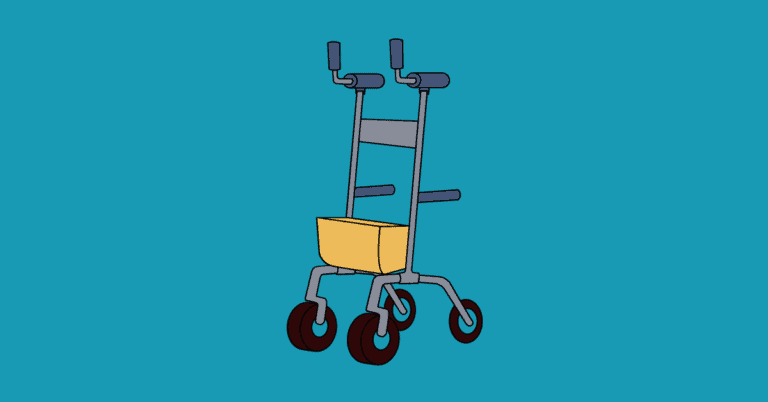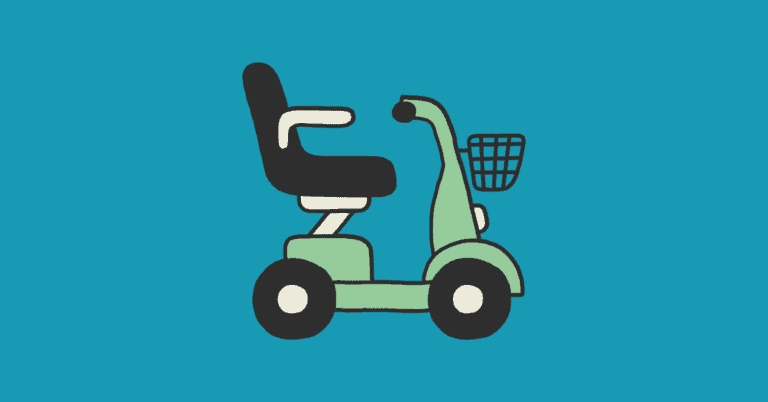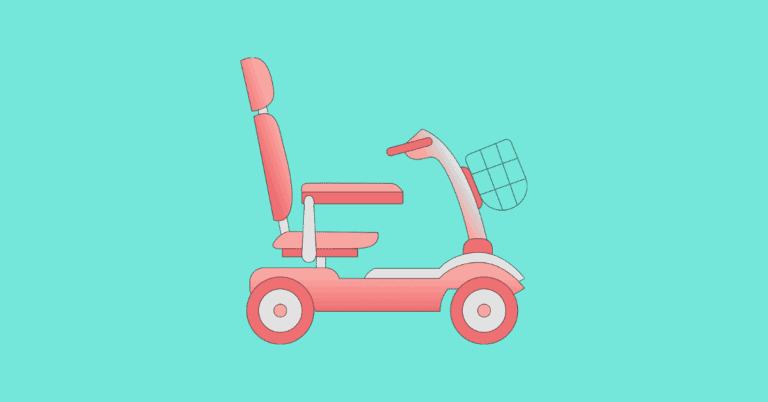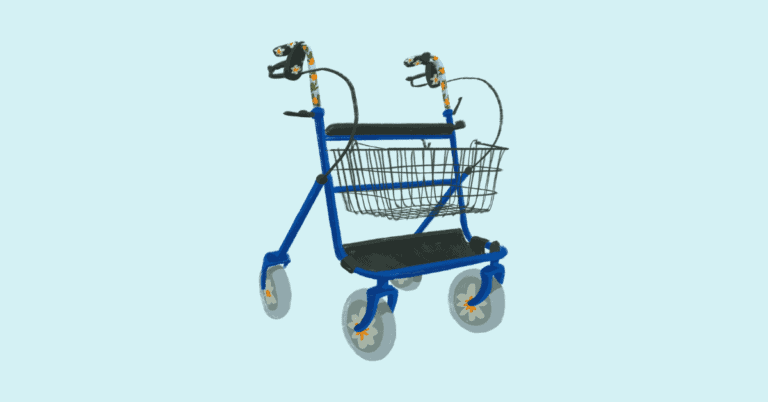Types Of Wheelchairs: Different Features Explained
Movement and mobility play pivotal roles in our daily lives. It’s no wonder that enabling individuals with mobility considerations to actively participate in daily activities and hobbies lies at the heart of various health professions. Among the array of assistive devices, wheelchairs stand out as a common and indispensable tool.
However, the world of wheelchairs is as diverse as the individuals who rely on them. This article serves as an informational guide, aimed at unraveling the myriad features that differentiate one wheelchair from another.
Nonetheless, whether you’re exploring wheelchair options for yourself or a loved one – don’t hesitate to reach out to a health professional for guidance.
What are the different types of wheelchairs?
The two main categories of wheelchairs are manual and powered/electric wheelchairs. Within these categories, there are different sub-categories of wheelchairs, such as pediatric wheelchairs, lightweight wheelchairs, and heavy duty wheelchairs.
Manual wheelchairs
Manual wheelchairs are the most common type, typically featuring a frame with two large rear wheels and smaller front caster wheels. Users propel themselves by pushing the wheels by hand. There are several subtypes of manual wheelchairs such as lightweight manual wheelchairs and sports wheelchairs.
Powered Wheelchairs
Electric Wheelchairs are the most common type, featuring rechargeable batteries that power electric motors to drive the wheels. Users can control speed and direction, making them ideal for individuals with mobility impairments.
In other words, unlike manual wheelchairs, which require physical effort to propel, powered wheelchairs are electrically operated and controlled through intuitive interfaces such as joysticks or specialized switches.
What are the features that make a wheelchair unique?
Frame of Wheelchair
The frame of a wheelchair serves as its structural backbone, influencing its overall efficiency, maneuverability, and transportability.
Rigid Frame
This type of frame offers a stable platform for smooth propulsion and responsive handling. However, rigid frames may pose challenges when it comes to transportation. Users often need to remove the wheels for easier transport, which can add time and effort.
Folding Frame
Designed for convenience, folding frames feature a collapsible design that allows the wheelchair to fold for transport and storage. While offering greater portability, folding frames may sacrifice some maneuverability compared to rigid frames. Additionally, the folding mechanism adds weight to the wheelchair, which can affect handling. Nevertheless, for users prioritizing ease of transport and storage, folding frames remain a practical choice.
Sport/adaptive Frame
Tailored for specific activities or secondary uses, sports or adaptive frames cater to niche requirements beyond primary mobility. These frames often feature specialized configurations optimized for activities such as wheelchair sports or recreational pursuits. While not suitable for everyday mobility needs, sports or adaptive frames provide users with the flexibility to engage in various physical activities and pursuits.
Arm Rests
There are two main types of arm rests. The swing-away tubular armrests are lightweight and easy to move. They literally ‘swing out’ to the side when you need to get in or out of the wheelchair. On the other hand, the standard flip-back armrests are generally a bit heavier and larger in size. The larger size provides more stability for your arms and sides of the trunk. These arm rests tend to flip up and backwards when you want to transfer in and out of the wheelchair.
Leg Rests
Similar to arm rests, there are two main types of leg rests. Removable swing-away leg rests can pivot to the side, making transferring in and out a smoother process. However, they are slightly heavier than rigid leg rests. On the other hand, rigid leg rests typically come in one piece for both the feet to rest on and remain in place. Since they are one piece, setup is usually easier with rigid leg rests.
Tires and front caster
The front caster refers to the small wheels located at the front of the wheelchairs. A larger front caster allows for a smoother ride and improved terrain negotiation. It helps the wheelchair roll more easily over obstacles and uneven surfaces, enhancing overall comfort and stability. On the other hand, a smaller caster enhances maneuverability on smooth surfaces but may present challenges when navigating rough, uneven terrain.
Additionally, treads are the patterns or grooves on the tire’s surface, providing traction and stability. While treads can enhance traction on challenging surfaces like gravel or grass, they may add weight to the wheelchair.
The two common types of tires are pneumatic air tires and solid (or flat-free) tires.
Pneumatic Air Tires
These tires are filled with air, akin to car tires. Lighter in weight compared to solid tires, pneumatic tires facilitate easier propulsion of the wheelchair. However, they require more maintenance, as they can become punctured or lose air pressure over time. Despite this, pneumatic tires offer a smoother ride during propulsion, due to their ability to absorb shocks and bumps for better comfort.
Solid Tires
Solid tires or those with flat-free inserts are heavier than pneumatic tires. Nevertheless, they eliminate the risk of flat tires, ensuring consistent performance over various terrains without the need for frequent maintenance. While they may not offer as cushioned a ride as pneumatic tires, they may provide peace of mind and reliability for some users.
Cushions
Gel or Gel-combination Cushions
Gel cushions or those combining gel with other materials offer a good compromise between stability and pressure relief – which is why these cushions are becoming more common. These cushions typically provide adequate support while also offering effective pressure redistribution. Additionally, gel cushions are often more breathable than other types.
Air cushions
Air cushions are the best option for pressure relief as they help distribute weight evenly across the cushion’s surface and reduce pressure points, making them ideal for users at risk of developing pressure sores. However, air cushions may be less stable for balance compared to other types of cushions, which is something users have to be aware of.
Foam Cushions
These cushions are made from various foam materials, each with its own density. While they can provide adequate support during shorter periods of use, they are not ideal for prolonged use as they may not help with pressure relief.
All things considered, regardless of the type of cushion your wheelchair has, it’s important to establish a good pressure relief program to promote skin health and prevent complications.
Specifically, pressure sores, also known as pressure ulcers or bedsores, can develop when pressure is consistently applied to certain areas of the body, leading to tissue damage.
A pressure relief program involves shifting body weight or changing positions regularly, typically every 30 minutes, to alleviate pressure on vulnerable areas such as the buttocks, hips, and heels. These techniques may include leaning forward, side-to-side shifts, or lifting the body slightly off the cushion, holding each separate position for a minimum of one minute.
What are the different types of power functions in an electric wheelchair?

Electric wheelchairs vary based on the power features they offer. Depending on the user’s requirements, some of these features are essential for enabling independence and facilitating pressure relief.
Power tilting
Power tilting is a feature available in some electric wheelchairs that allows the seating system to tilt backward or forward, as well as side to side, while the wheelchair remains stable. This tilting function is controlled electronically, typically through a joystick or other interface, and enables users to adjust their seating position for comfort, pressure relief, or functional activities.
Standing wheelchairs take it a step further with the tilting function by fully allowing the user to transition from a seated position to a standing position while remaining in the wheelchair. A standing wheelchair is beneficial for assisting with pressure relief, supporting bone health, and allowing greater participation in social activities.
Power elevating chair
Power elevating is a feature found in certain electric wheelchairs that enables the seat to be raised or lowered while maintaining stability. This function is controlled electronically, typically through a joystick or other interface, allowing users to adjust the height of their seat according to their needs.
Power elevating provides several benefits, including improved accessibility, enhanced social interaction by bringing the user to eye level with others, and increased independence in reaching objects at different heights. Additionally, power elevating can assist with transfers to and from the wheelchair by lowering the seat to a level closer to the ground.
Power recline
Power recline is a feature available in certain electric wheelchairs that allows the backrest to tilt backwards. While a reclining wheelchair can be used to aid during pressure relief, it also allows users to customize their seating position for activities such as resting, watching TV, or socializing. Additionally, power recline can assist caregivers in positioning the user for tasks such as personal care or medical treatments.
Power drive
Power drive refers to the method by which an electric wheelchair is propelled.
Front wheel drive
In front-wheel drive systems, the motor and drive wheels are located at the front of the wheelchair. This configuration offers the most stability due to their balanced weight distribution and forward center of gravity, making it suitable for outdoor use including uneven terrain. Placing the drive wheels at the front ensures that the user’s weight is evenly distributed between the front and rear of the wheelchairHowever, front-wheel drive wheelchairs may have slightly reduced maneuverability compared to other drive types due to a larger turning radius.
Mid wheel drive
Mid-wheel drive systems position the drive wheels directly under the user’s center of gravity, offering excellent maneuverability. The smaller turning radius enables tighter turns and improved navigation in narrow or crowded spaces. The primary advantage of mid-wheel drive is its enhanced accessibility, as these wheelchairs can easily maneuver through doorways, corridors, and tight spaces, improving mobility in various indoor environments. They can also perform adequately outdoors on smooth surfaces like pavement, sidewalks, and level terrain.
Rear wheel drive
These systems place the motor and drive wheels at the rear of the wheelchair. Rear-wheel drive wheelchairs tend to have faster speeds compared to other drive configurations. The placement of the drive wheels at the rear allows for more efficient power transfer, enabling higher speeds when navigating smooth surfaces or traveling longer distances. However, one drawback of rear-wheel drive wheelchairs is their larger turning radius. Due to the positioning of the drive wheels at the rear, these wheelchairs require more space to execute turns compared to mid-wheel or front-wheel drive configurations. This larger turning radius may make maneuvering in tight or confined spaces more challenging. Additionally, rear-wheel drive wheelchairs may also have slightly less stability compared to other drive types, particularly when navigating uneven terrain or making sudden stops or turns. The majority of the weight is concentrated towards the rear of the wheelchair, which can affect balance and stability in certain situations.
Power control options
The most popular type of control in power wheelchairs is the joystick, which allows users to navigate the wheelchair by moving the joystick in the desired direction. In addition to joysticks, there are alternative control options available for individuals without upper extremity function. One such option is the head array, which allows users to control the wheelchair’s movement using head movements. Another alternative control option is chin control, which enables users to operate the wheelchair using chin movements.
Bottomline – Types of wheelchairs

There are varying types of wheelchairs for different purposes. By consulting with healthcare professionals and exploring available options, you can find the best wheelchair to enhance your quality of life and participation in everyday activities.





